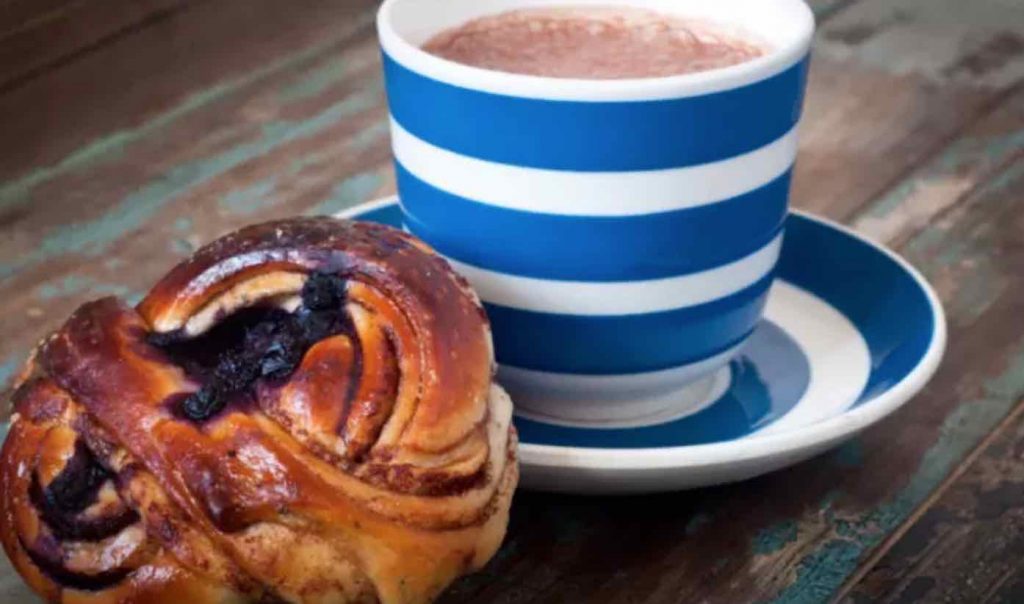
Do you sometimes ”fika” with your colleagues? Congratulations, you are not only enhancing your creativity and social skills, you are also taking part in something very Swedish which is now spreading globally…
So what is this fika (prounced “feekah”) business? It is having coffee, or another beverage, often together with a biscuit or a piece of cake. But this does not complete the picture of what fika can be. As Wikipedia puts it, “Fika is considered a social institution in Sweden; it means having a break, most often a coffee break, with one’s colleagues, friends, date or family.” In many work places there is an unwritten rule that everyone has a fika break together mid-morning and/or mid-afternoon.
But what is all the fuss about? According to research, the Swedish fika break is so much more than just a coffee and a moment’s relaxation. To fika with your colleagues is actually the golden ticket to developing your social skills, boosting your creativity and to finding out what is really going on at work. It is perhaps no wonder then that the Swedish TV News just announced that as part of their coverage of next year’s election in Sweden, they are planning to travel up and down the country to fika with people to find out about their political views.
Viveka Adelswärd, Professor of Communication at The University of Linköping, Sweden, concluded the following in an interview on the University website a few years ago:
– During the fika break, any potential hierarchies become irrelevant and you have your fika together regardless of power and position. It gives you a break from work and both employees and employers get a lot in return. During the fika break, we often talk about work and find out what is going on in the organisation. We sound each other out and perhaps open the door to our private lives a little.
According to Viveka Adelswärd, fika breaks also make us more creative:
– We get a chance to “air” our brains, we can refuel with inspiration from others and get an opportunity to test drive new ideas.
The fika culture is now spreading outside of the Swedish borders. Last year, the BBC shone a light on the Swedes’ love of fika in an article entitled, “Is this the sweet secret to Swedish success?”. They observed that, ”In many work places, sitting down to fika at a designated time each day is mandatory. No really.” The BBC also revealed that the furniture giant IKEA claims that “some of the best ideas and decisions are born during the fika breaks”.
Last year, “Fika That” (“Fika Fix” in the US), a book written by Émile and Åsa Odbäck, was published in the US. “Fika That” highlights the fika break as a magical force behind happiness and a prosperous life. Some TV channels in the US and in Canada have drawn attention to the book and it also recently made its way all the way to Psychology Today, an esteemed American scientific magazine and website.
Under the headline, ”Managing Three Work Groups – Does Your Company Fika?”, leadership developers Larry Stybel and Maryanne Peabody state that there are today three types of work groups in companies: team, work group and … fika!
Fika? It seems the Swedish fika break has been elevated to a sort of meeting culture in the US. Of course you have coffee in American work places too, but often you just grab a cup of “java” and then carry on working alone, Stybel and Peabody explain. Swedish fika is a completely different thing, “where you get together and chat in a relaxed way with a coffee and perhaps a snack”. The authors then go on to suggest a set of rules for how to manage the fika tradition for success:
• The main purpuse of fika is “chumship” and informal communication between colleagues.
• There must not be an agenda, or a stated topic that must be discussed. You are free to talk about whatever you want, work-related or personal matters.
• Regularity is important, preferably around the same time every day, rather than a Friday afternoon exception.
• No limit of numbers. You can fika in larger or smaller groups.
• Of course there should be coffee on offer (or another beverage), as well as something edible, for example cake or biscuits.
• If you bring our own snacks, be open about sharing it.
• Preferably chat to someone you do not know so well or see very often.
• Mobile devices should of course be switched off and kept away from the table.
Stybel and Peabody note that, “The Swedes can balance consistency of fika with a demanding work schedule by keeping fikas to 15 minutes” and give the following advice to American leaders and managers: “If you do not have a regularly scheduled fika, consider organizing one as a way of improving communication in your work places.”
So, what do you think? It is perhaps high time we announced fika an important leadership competency for our managers?
Oh dear, is that the time?! I am off to have a fika…



